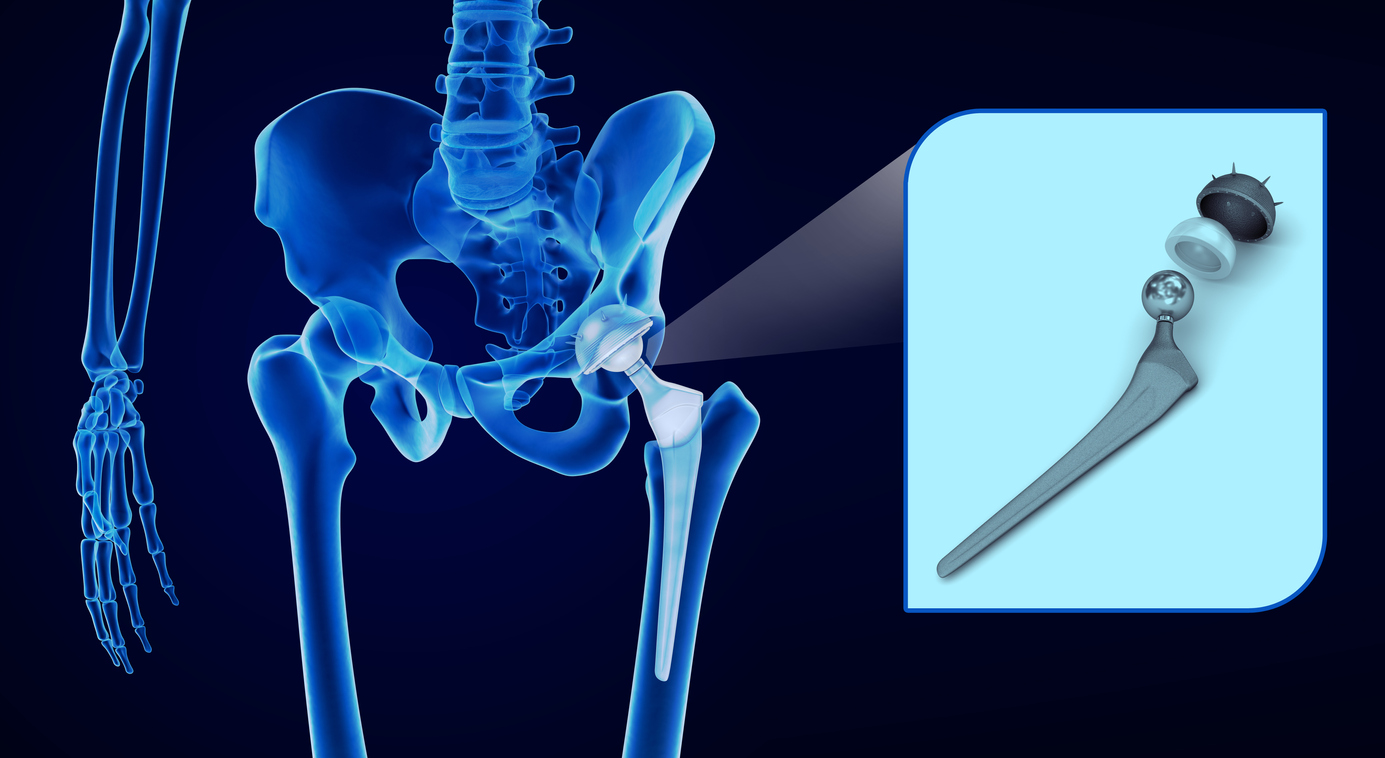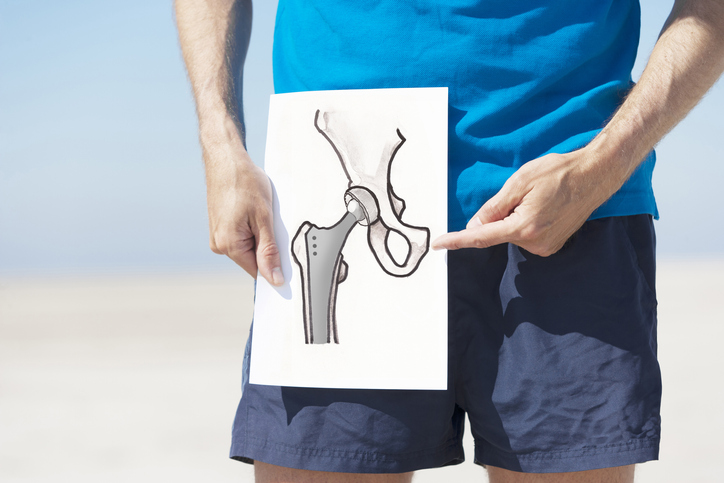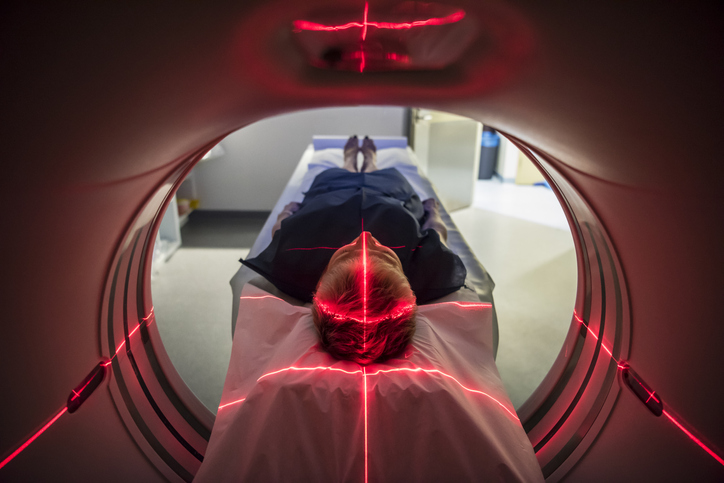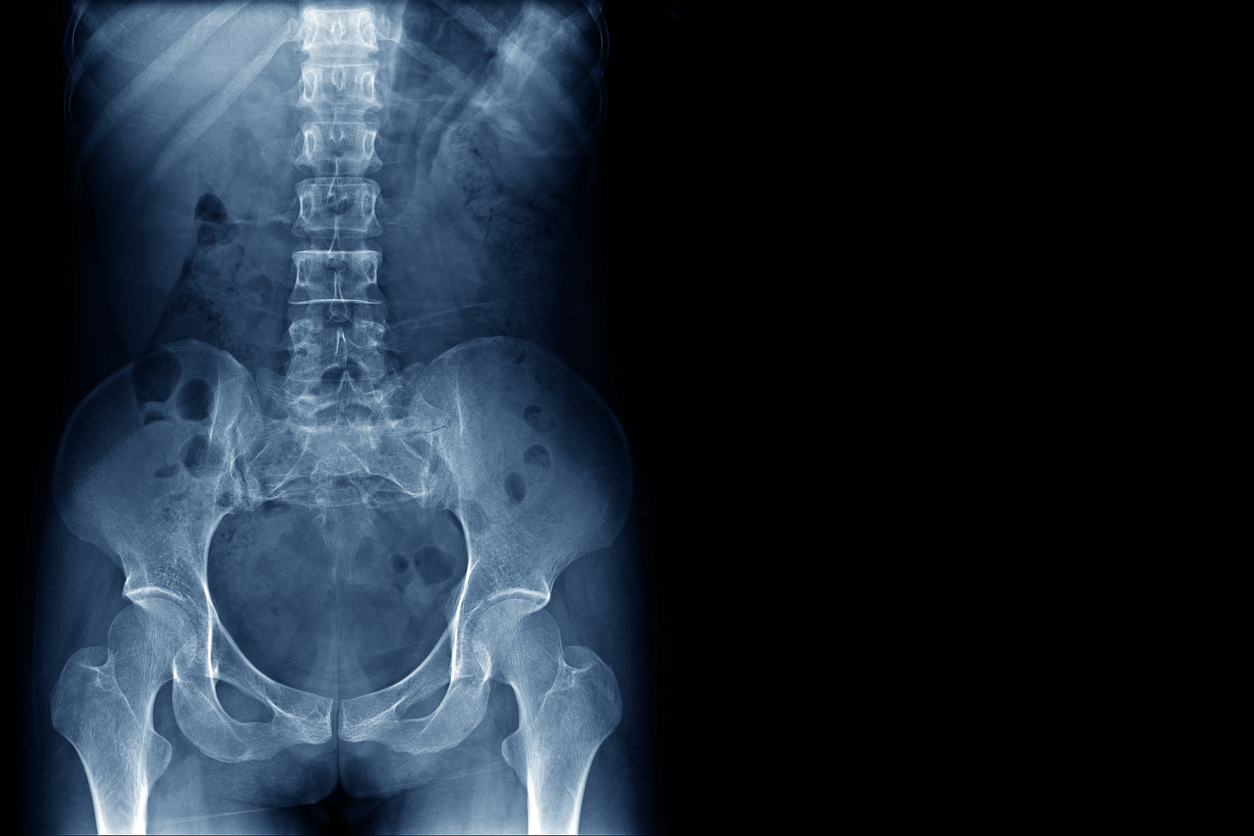Treatments
Risks and Benefits of Hip Replacement Surgery

What is hip replacement?
Hip replacement, also called hip arthroplasty, is a surgical procedure involving removal of damaged sections of the hip and replacement with artificial parts constructed of metal, ceramic or hard plastic. The artificial joint (prosthesis) can reduce pain while improving function. Hip replacement is often done when other treatment options have failed to provide pain relief. Hip replacement surgery typically takes about two hours to complete.
Benefits of hip replacement surgery
Oftentimes, hip replacement surgery is required due to a hip fracture. It may also be needed to help individuals with severe hip pain that is no longer responsive to conservative treatments. Hip damage can occur due to osteoarthritis, rheumatoid arthritis, avascular necrosis, injury, or a tumor in the hip joint. Although hip replacement surgery may be a last-option choice, the benefits include, but are not limited to, the following:
- Pain relief. Hip replacement surgery may be performed when severe pain is consistent and does not respond to anti-inflammatory medications, physical therapy, joint injections, or other conservative treatments. Successful hip replacement surgery can lessen or alleviate hip pain.
- Increased mobility. Severe hip pain prior to surgery can cause difficulty walking, maneuvering stairs, exercising, or even putting on shoes or socks. Although there are no guarantees, most people walk easier after a hip replacement. Successful hip replacement surgery can help lessen or alleviate pain and stiffness, which can result in increased mobility.
- Added health benefits. Research suggests that increased mobility from hip replacements can lower the long-term risk of heart failure, depression, and diabetes. For those with osteoarthritis who receive a hip replacement, the long-term risk of stroke and heart attack was decreased by 40% compared to those with osteoarthritis that did not receive the surgery.
- High success rate and longevity. Studies suggest satisfaction rates following a hip replacement to be as high as 90%. Most hip replacements last between 15 and 20 years.
Risks of hip replacement surgery
A hip replacement has risks similar to other major surgeries. The chance of developing complications is higher for individuals with heart disease, uncontrolled diabetes, or a weakened immune system. Potential risks of hip replacement surgery include, but are not limited to, the following:
- Infection. An infection may occur at the incision site or deep in the tissue near the hip.
- Blood clots. Blood clots are dangerous and may form in leg veins following hip replacement surgery. Blood-thinning medication can reduce this risk.
- Heart attack or stroke. During the first two weeks following joint replacement surgery, the risk of a heart attack increases by up to 31%. This is due to the body’s tendency to clot blood after major surgeries.
- Nerve damage. Although rare, nerve damage may occur in the area of the implant.
- Not regaining maximum range of motion. Maintaining the prescribed therapy, exercise, rest and medications can help in regaining the maximum range of motion following hip replacement surgery.
- Difference in leg length. One leg may be longer or shorter than the other due to contracture of muscles around the hip. This may improve by strengthening and stretching the muscles
- Fracture. It is possible for a healthy portion of the hip to fracture during hip replacement surgery.
- Dislocation. During the first few months following hip replacement surgery, certain body positions may cause the ball to come out of the socket.
- Loosening. Although rare, the new joint may loosen over time if it does not become solidly joined to the bone following surgery.
- Need for a second hip replacement. Although newer implant material lasts longer, a prosthetic joint can wear out. A second hip replacement surgery may be necessary if this occurs.
















